Kids love secret codes! Who wouldn't want to be able to write messages to friends that no one else (especially those pesky grown-ups) will be able to read? The pigpen cipher is a fun switch from the typical number and letter substitution codes. (like this one), rely on numbers as a substitution for letters, but the pigpen cipher substitutes symbols for letters of the alphabet.
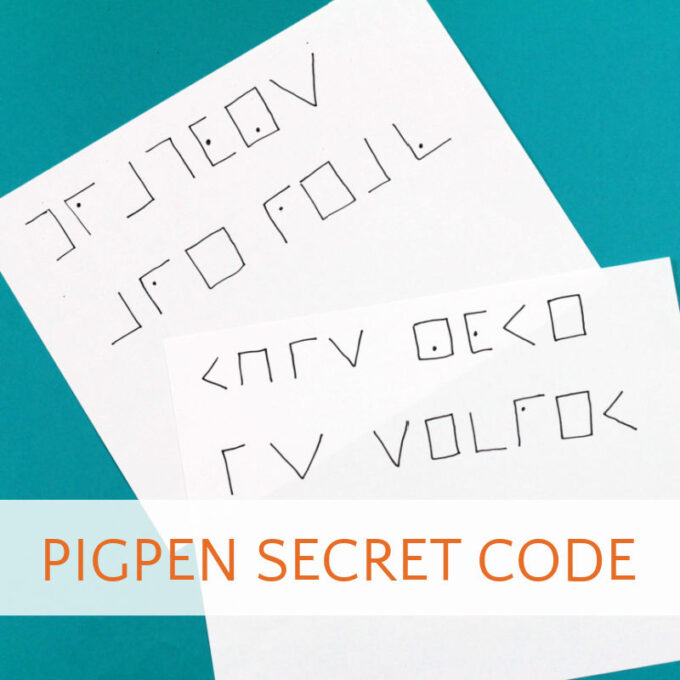
How is a Cipher Different than a Code?
If you think "cipher" and "code" are synonymous, you are not alone. I'll let the experts at Khan Academy explain,
A code is a mapping from some meaningful unit [emphasis mine]—such as a word, sentence, or phrase— into something else—usually a shorter group of symbols.
Codes can be numbers like writing 55 every time you mean "bread," but you can also think of codes as substitutions of one group of words for another. For example, "The blue horse has left the zoo," may be code for "I took the blueberries out of the fridge."
A cipher on the other hand, is the system, or algorithm that is used for making substitutions. The cipher has no inherent meaning. The most common cipher kids start experimenting with is the Caesar cipher, in which one number stands in for one letter, like 1 for A, 2 for B, and so on.
History of Pigpen Cipher
The cipher is centuries old, and therefore there are several variations of the pigpen cipher. The exact origins are unknown, but starting in the 18th century, it was frequently used by the Freemasons, you might sometimes hear it referred to as the Freemasons cipher, or masonic cipher.
How Pigpen Cipher Works
Each letter of the alphabet is substituted with a simple geometric picture symbol. Symbols are created using grids and crosses so that each letter is represented by fragments of a grid or cross with or without a dot. The name "pigpen" refers to this grid pattern.
Pigpen is easy to learn and fun to decipher so anyone can quickly flex their cryptography skills! Even kids who don't like writing will enjoy composing messages to friends and family, perhaps even sending grandma a coded postcard in the mail.
Kids who love to engage in pretend play will get a kick out of practicing their spy and detective work using secret codes. Writing secret messages in the pigpen cipher is also a great spy party game! Be sure to check out all our spy activities for kids.
How to Write in Pigpen Cipher
Have your child draw the following decoder before attempting to write a coded message:
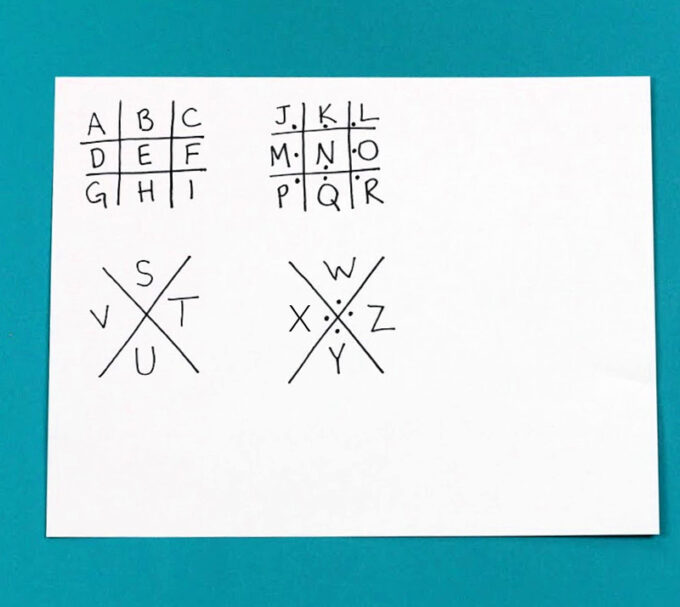
The letters are distributed over two tic-tac-toe grids and two crosses. One grid and one cross also contain dots in each space.
Now, practice writing letters individually. Each letter is surrounded by 2 or more lines of the grid and may include a dot.
For example, "E" is written as a box, "N" is written as a box with a dot inside. "W" is written as a "V" with a dot at the inside low point.
Here is an example of a message in the process of being decoded:
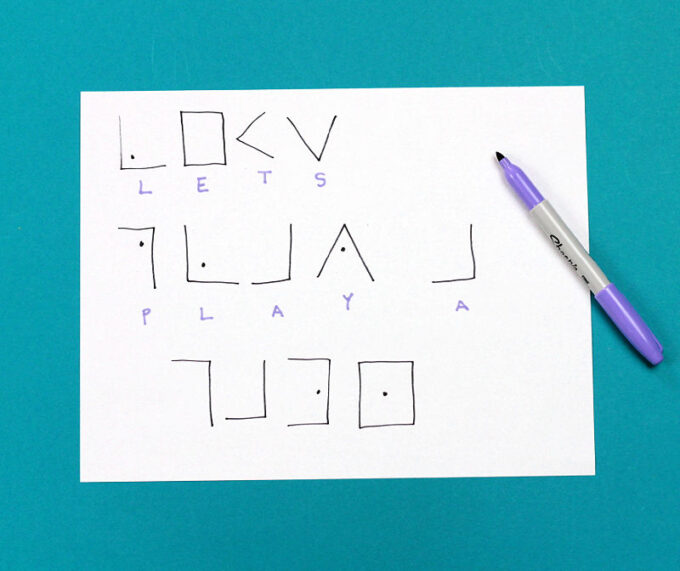
Now kids are ready to write in secret code and be professional codebreakers!
Can they decode this message?
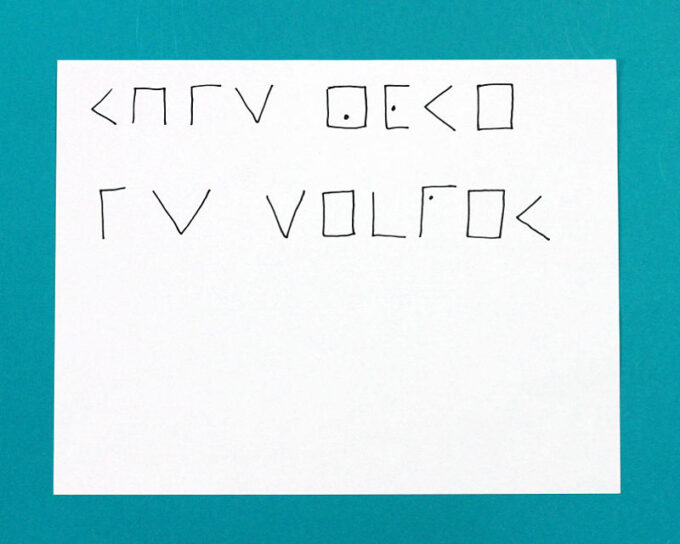
How about this one?
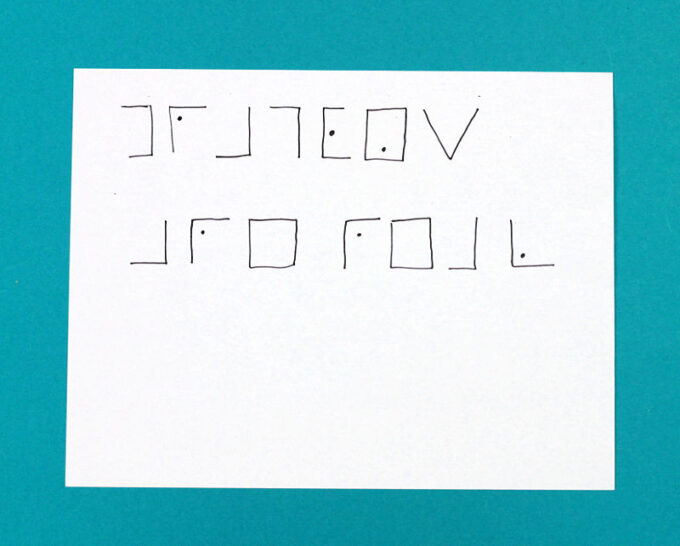
Be careful! A good spy never lets the cipher fall into the wrong hands!
Pigpen Cipher Variations
Creating pigpen cipher variations is a great cryptography challenge for kids. They can experiment with the placement of different letters in grid spaces, the order of the grids and crosses or the location of the dot.
More Fun for Budding Spies:
Now that your children have mastered writing in code they will want to learn more about the history of cryptanalysis, spy work, as well as practice their new
- Spy books for kids:novels and how-to books for young detectives and secret agents with more examples of secret writing
- Compute and Find: a secret code scavenger hunt with superheroes. My boys loved this after school activity which combines math with code breaking!




Lynn Campbell says
I do secret messages in this code and others for my treasure hunts with my grandchildren. The 13 and 14 yo are so, but the 10 yo loves them.
Erica says
Sounds like fun!
Harper Kuo says
Helped me so much for Science Olympiad!!!
Harper Kuo says
Helped me finally understand how to do the pigpen code!